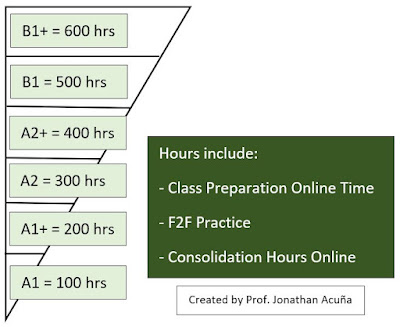Ruinas de Ujarrás, Ujarrás, Cartago, Costa
Rica
Photo
by Jonathan Acuña (2018)
Business
Understanding
The first
stage of Data Science
By Prof. Jonathan Acuña-Solano, M. Ed.
|
|
Head
of Curriculum Development
Academic
Department
Centro
Cultural Costarricense-Norteamericano
|
Senior Language Professor
School of English
Faculty
of Social Sciences
Universidad
Latina de Costa Rica
|
|
Post 338 / DS Log 7
|
|
Data Science is quite peculiar when it
comes to the steps one has to follow in order to start the process of
comprehending what exactly needs to be addressed when a company’s problem needs
to be explored, understood, and then resolved. But why is it so essential to
establish the “business understanding” at the start of the Data Science
methodology? Let’s explore some potential answers to this question especially
when linked to a very specific problem.
“Business understanding is the first stage of the data science methodology; it provides clarity about the problem to be solved and the data that should be used”
Business Problem Sample:
|
|
A language school whose
students are not obtaining the expected CEFR outcome at the end of its
program
|
|
2)
Understanding how the school is being affected by a poor performance of their
graduating students will help stakehoders to formulate the right question(s)
to ask to set the data requirements to gather information.
|
3)
This open and sincere discussion with the school academic stakeholders will
provide room to comprehend why the problem needs to be given a solution, the
reasons why the current state of affairs has to be amended.
|
“To establish business understanding,
structured discussions with different stakeholders must happen so that the
research focus (goals and objectives) can be classified” (Laureate Education Inc., 2018) . It is crucial to
clarify at this point that these “discussions” cannot just be held to ask
company contributors what they want in terms of the enterprise’s problem;
consultations have to be organized to get to the gist of the research focus
needed to find solutions to the problem. Team members must come from different
areas in a company; business understanding cannot just be provided by one single
individual. And through all these deliberations goals and objectives also need
to be clearly stated in the minds of company’s stakeholders and the data
scientist(s). Forgetting this simple step in business understanding may trigger
the wrong results.
Business Problem Sample:
|
|
A language school whose
students are not obtaining the expected CEFR outcome at the end of its
program
|
|
2) The
group of academic contributors must come from different areas of the
department. This is not just about an academic director’s perception; it has to
come from all areas that constituted the department.
|
3) All
members of the academic team must have clearly stated -in their mind- the
goals and objectives of finding the reasons why students are not achieving
the correct CEFR level. Everyone has to embrace the project.
|
“Once a business understanding is in place, key business partners can remain engaged and provide support and guidance to project members”
Business Problem Sample:
|
1) Though
there are structured conversations among the academic stakeholders, they need
to remain part of the project and not just stay aside and wait for results.
These people help in discovering solutions.
|
A language school whose
students are not obtaining the expected CEFR outcome at the end of its
program
|
|
2) Academic
collaborators support the data scientist(s) when they contribute with
information to consolidate the business understanding here linked to the poor
CEFR performance of the school’s language learners.
|
3) Academic
engagement will be present all across the process since as team players, they
can provide the data science group with guidance especially when a piece of
the puzzle is missing in its right position.
|
As a first stage in Data Science,
business understanding is decisive and imperative. Lack of understanding among
all participants in a data science team can lead to formulating wrong questions
and obtaining inaccurate answers. In the example used in this presentation of
facts associated to the language school, there are plenty of people involved in
the search for an answer as to why their learners are not achieving the mastery
of the CEFR level the program aims at. Their participation in the process to
find answers to the questions they pose as central will determine the goals,
objectives, and scope of the possible answers they can obtain. As stakeholders
they can make better decisions in regards to what needs to me done to help
their students become competent English speakers.
References
Laureate Education Inc. (2018). Asking Questions
with Data Science. Retrieved from One Faculty: https://dtl.laureate.net/webapps/blackboard/content/listContent.jsp?course_id=_165016_1&content_id=_801203_1&mode=reset
Post 338 - Business Understanding by Jonathan Acuña on Scribd
Sunday, August 18, 2019




















